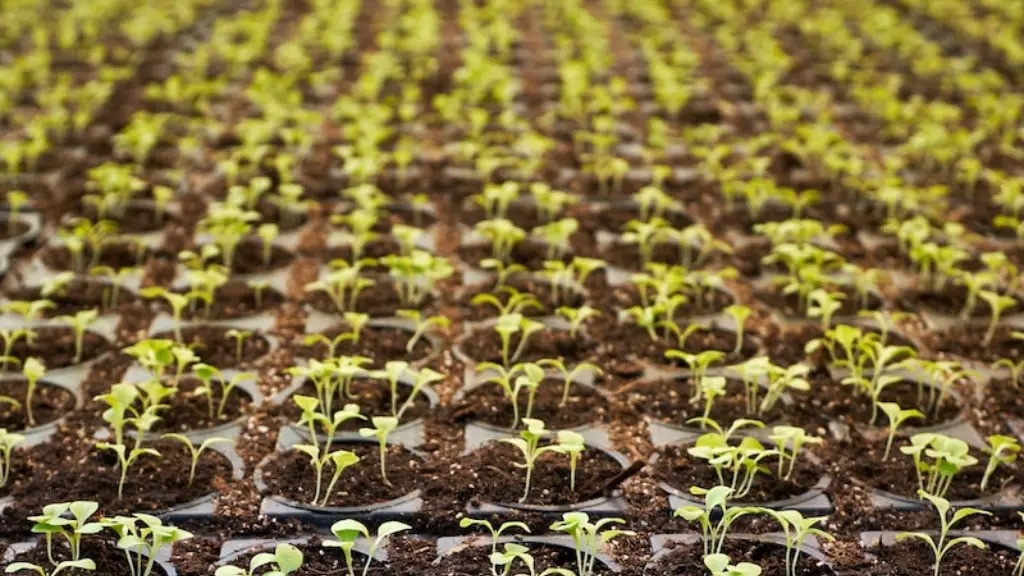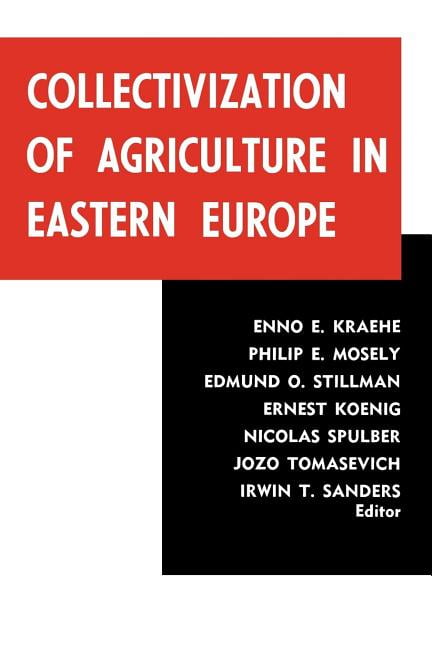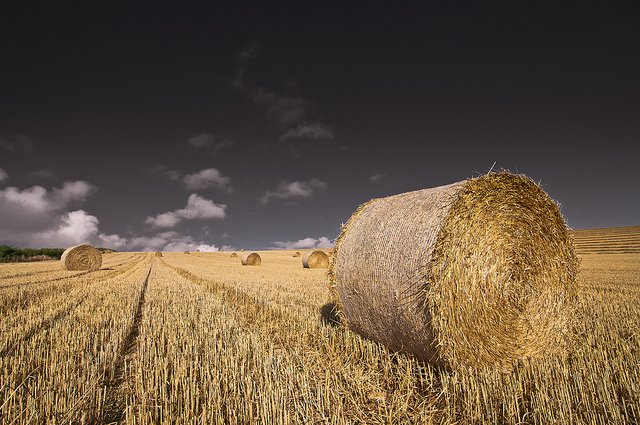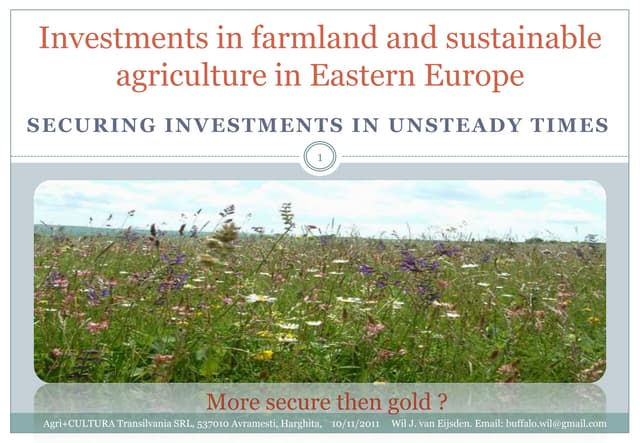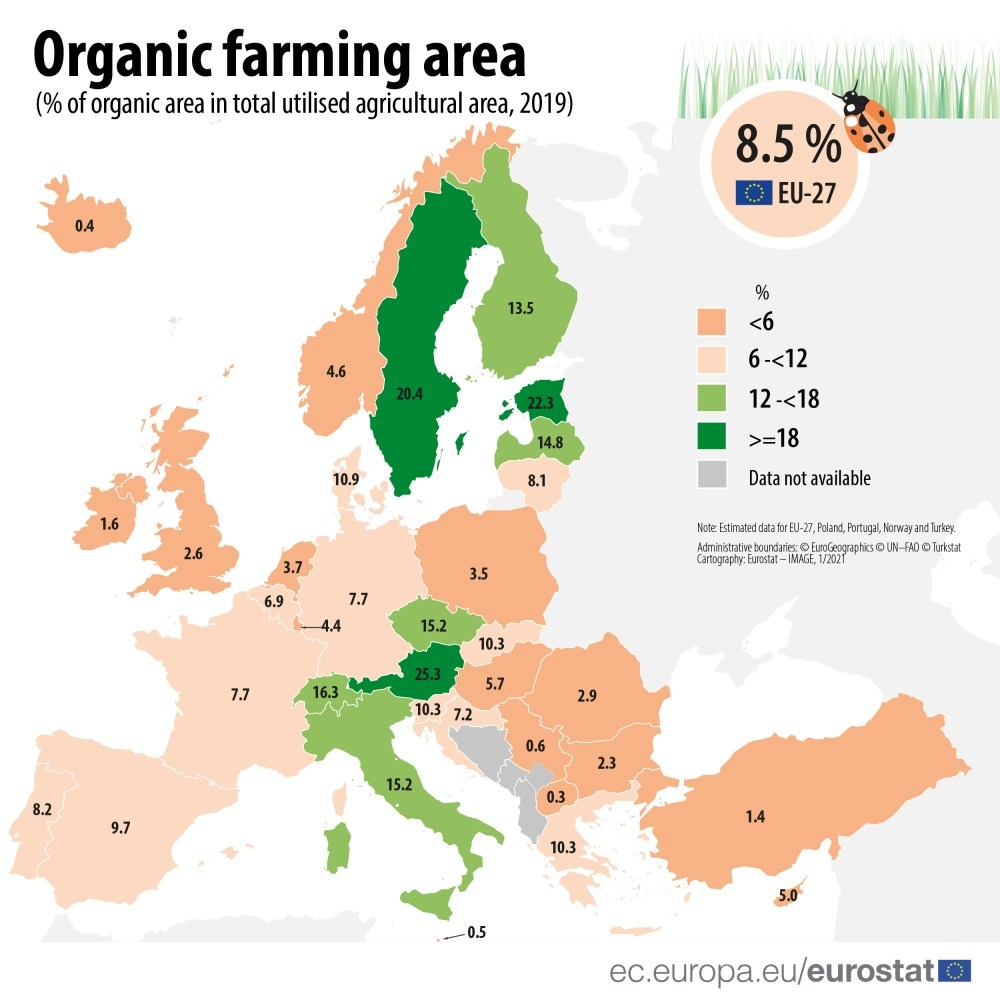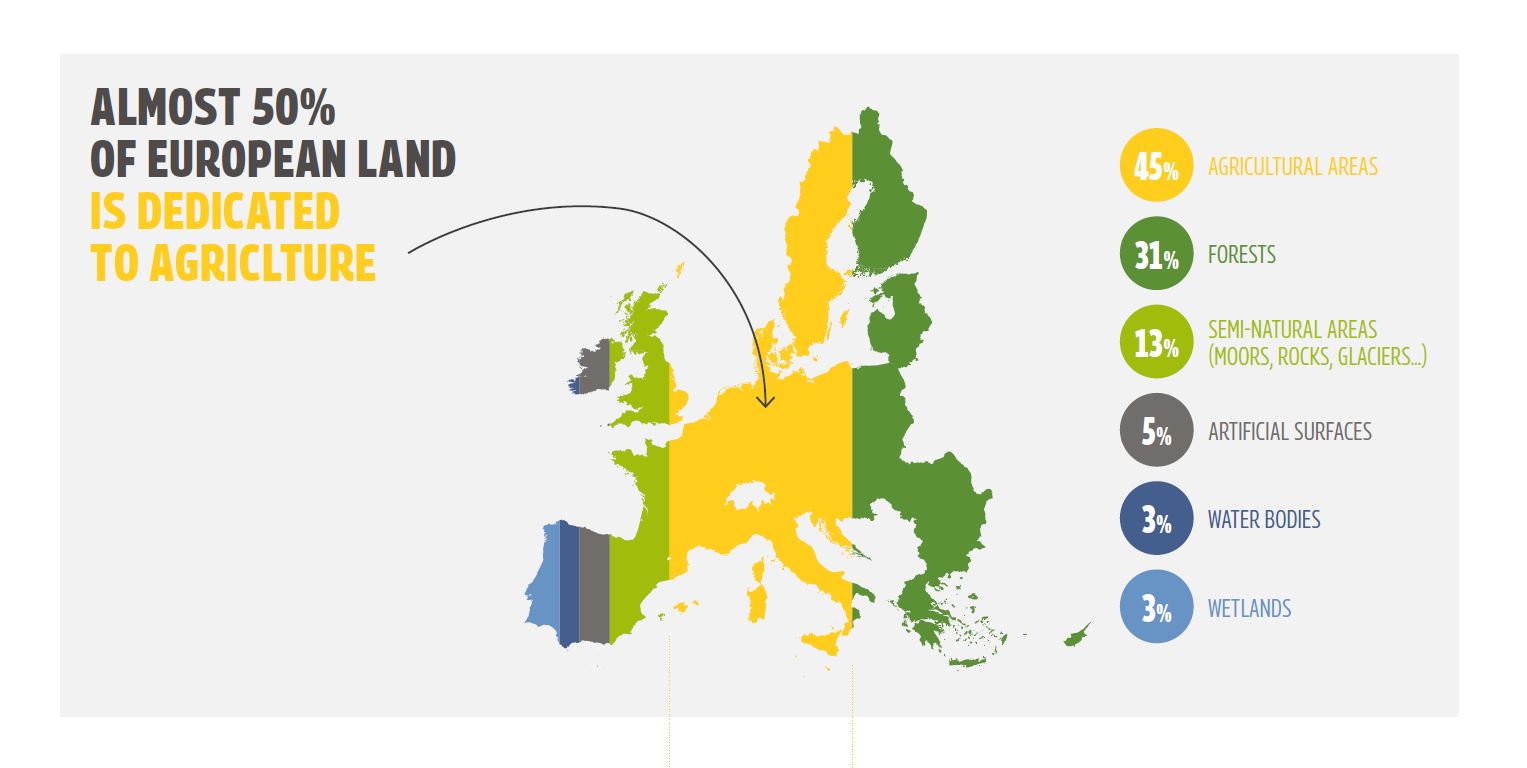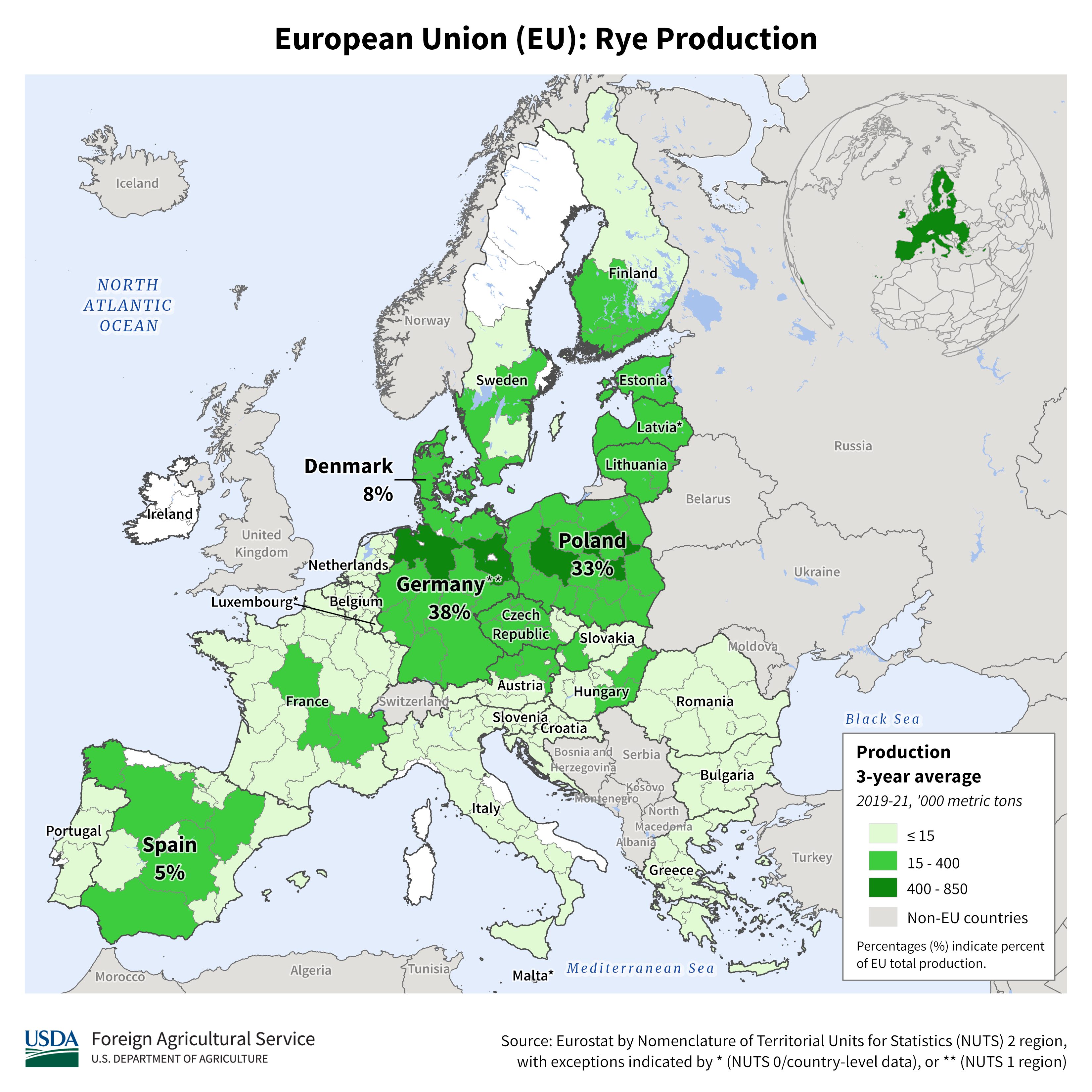Why Is There Limited Agriculture In Eastern Europe
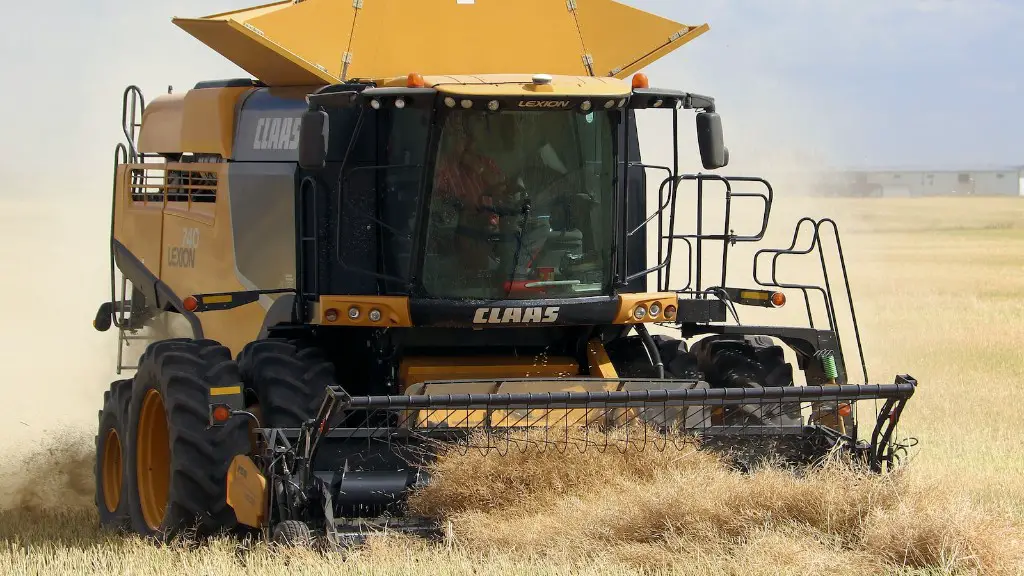
Imagine rolling hills, once vibrant with the promise of golden wheat and sun-kissed sunflowers, now dotted with fallow fields and whispering tales of unrealized potential. The fertile lands of Eastern Europe, cradled between the Baltic Sea and the Balkan Mountains, hold a secret – a complex interplay of history, economics, and social change that explains why their agricultural output hasn't reached the levels one might expect given their natural endowments.
The question of why agriculture in Eastern Europe lags behind its potential isn't a simple one. It's a tapestry woven with threads of post-Soviet transition, land ownership complexities, aging infrastructure, and a persistent struggle to attract young people back to the farm. This article delves into the heart of this multifaceted issue, exploring the challenges and opportunities that shape the region's agricultural landscape.
A Legacy of Transformation
The collapse of the Soviet Union marked a pivotal moment for Eastern Europe. Decades of collectivized farming under communist regimes had left a deep imprint, often prioritizing output quotas over efficiency and sustainable practices. The transition to market economies presented both an opportunity and a daunting challenge: how to dismantle these large, often inefficient collective farms and redistribute land to individual owners.
This process, known as decollectivization, was far from seamless. In many countries, land restitution laws were complex and poorly enforced, leading to fragmented ownership and disputes that continue to hamper agricultural development. "The issue of land ownership remains a critical factor," explains Dr. Anna Kowalska, an agricultural economist at the Warsaw University of Life Sciences. "Unclear titles and small, scattered plots make it difficult for farmers to invest in modern technologies and achieve economies of scale."
Furthermore, the lack of access to capital and credit plagued many newly privatized farms. Without the financial resources to purchase modern machinery, fertilizers, and high-quality seeds, farmers struggled to compete with Western European counterparts. The World Bank and the European Bank for Reconstruction and Development (EBRD) have implemented programs to support agricultural development in the region, but their impact has been uneven.
Infrastructure and Investment
Beyond land ownership and access to finance, inadequate infrastructure poses another significant obstacle. Rural roads are often poorly maintained, making it difficult to transport produce to markets. Storage facilities are outdated, leading to spoilage and post-harvest losses. Irrigation systems, crucial for mitigating the effects of climate change, are often in disrepair or nonexistent.
Investment in agricultural research and development (R&D) is also lacking in many Eastern European countries. This limits the adoption of new technologies and practices that could improve productivity and resilience. While some countries, like Poland and the Czech Republic, have made progress in this area, others continue to lag behind.
According to a report by the Food and Agriculture Organization (FAO),"Investing in rural infrastructure and agricultural R&D is essential for unlocking the potential of Eastern European agriculture." The report highlights the need for targeted investments in irrigation, storage, and transportation to reduce post-harvest losses and improve market access.
The Demographic Shift
A significant demographic shift is also impacting Eastern European agriculture. Young people are increasingly drawn to urban areas in search of better opportunities, leaving rural areas with an aging population and a shortage of skilled labor. This trend is exacerbated by the perception that farming is a low-paying and unrewarding profession.
"We are losing a generation of farmers," laments Ivan Petrov, a farmer from Bulgaria. "Young people see no future in agriculture. They are leaving the villages for the cities or for jobs abroad." Attracting young people back to the land requires a multi-pronged approach, including providing access to education and training, offering financial incentives, and promoting the image of agriculture as a modern and innovative sector.
Climate Change: A Growing Threat
Climate change poses a growing threat to agriculture in Eastern Europe, as it does globally. Increased frequency and intensity of droughts, floods, and heatwaves are impacting crop yields and livestock production. The region is also vulnerable to soil erosion and desertification, particularly in the southern and eastern parts.
Adapting to climate change requires a shift towards more sustainable agricultural practices, such as conservation tillage, crop diversification, and water-efficient irrigation. It also requires investment in climate-resilient infrastructure and the development of drought-resistant crop varieties.
The European Union's Common Agricultural Policy (CAP) provides funding for climate-smart agriculture in Eastern Europe. However, the effectiveness of these programs depends on their implementation and the capacity of farmers to adopt new practices.
Success Stories and Future Prospects
Despite the challenges, there are also success stories in Eastern European agriculture. Some countries, like Poland and Hungary, have made significant progress in modernizing their agricultural sectors and increasing their exports. These countries have benefited from strong government support, access to EU funding, and a vibrant private sector.
Organic farming is also gaining popularity in Eastern Europe, driven by growing consumer demand for healthy and sustainable food. Several countries in the region have established strong organic certification schemes and are exporting organic products to Western Europe and beyond.
The future of agriculture in Eastern Europe hinges on addressing the challenges outlined above. This requires a concerted effort from governments, farmers, and the private sector to invest in infrastructure, technology, and human capital. It also requires a shift towards more sustainable and climate-resilient agricultural practices.
Ultimately, the potential of Eastern European agriculture remains immense. With the right policies and investments, the region can become a major player in the global food market, providing healthy and sustainable food for its own population and for the world.
The land, though scarred by past challenges, whispers a promise. A promise of renewal, of sustainable abundance, and of a future where the rolling hills once again resonate with the thriving hum of a vibrant agricultural heartland. The journey is ongoing, but the seeds of hope have been sown, and with careful tending, they will surely blossom.


